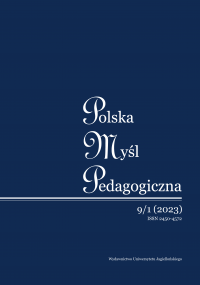CONSERVATIVE IDEAS AS THE SOURCE OF ACTIVITY OF THE POLISH WHITE CROSS IN THE UNITED STATES OF AMERICA
CONSERVATIVE IDEAS AS THE SOURCE OF ACTIVITY OF THE POLISH WHITE CROSS IN THE UNITED STATES OF AMERICA
Author(s): Elwira JOLANTA KRYŃSKASubject(s): Diplomatic history, Political history, Social history
Published by: Wydawnictwo Uniwersytetu Jagiellońskiego
Keywords: Polish White Cross; USA; conservatism; volunteerism;
Summary/Abstract: The purpose of this article is to analyze the conservative ideas that are the source of the work of the Polish White Cross in the United States of America. Consideration of this issue is desirable for several reasons. First, today’s resurgent radicalisms are causing the world that we have known for the past quarter of a century to cease to exist right before our eyes. At the same time, the European status quo has been challenged by the war steered by Putin. In this context, a question arises: Does Europe, which is in the process of “change”, still need a conservative voice? To answer this, it is worth recalling not only non-ideological ideas attempting to define the reality of the future, but also practical ones, including those from the early 20th century ini- tiated in the U.S., which played a historical role in the building of Polish statehood, and are now a testimony to joint-Polish-American initiatives that support democratic changes in the world. The reference to these examples is all the more justified because they are based on American conservative thought, which was the source of American human rights policy in the early 20th century. Representatives of the so-called idealist trend (also called Wilsonism), proclaimed that the United States could effectively exercise its function as a world leader if its policies promoted the traditional values of protecting individual rights and freedoms.Of breakthrough importance for the Polish cause was President Thomas Woodrow Wilson’s speech of January 18, 1918, in which, defining America’s war aims, he declared that an independent Polish state must be established as a result of the war. President Wilson also authorized the recruitment of volunteers for the Polish army and their training.Since every national army has its own humanitarian unit called the Red Cross, it was felt that the Polish Army should also have one. Unfortunately, as Poland was non-existent on the map of Europe at the time, it did not participate in the founding deliberations of the interna- tional Red Cross association established in 1864 in Switzerland, and therefore did not have the right to establish its own organization under this name. For this reason, Ignacy Jan Paderewski suggested the idea of establishing the Polish White Cross (PBK), which was grounded in con- servative ideas. In addition, the tradition of the Polish White Cross is worth discussing because of some opinions that volunteering in Poland was less common than in other Western countries and that Poland has no tradition of it. Meanwhile, the work of White Cross is a spectacular undertaking, unprecedented in the history of Poland, based on the principles of volunteerism, and is comparable to Poland’s current provision of relief action to hundreds of thousands of Ukrainian migrants due to Russia’s ruthless invasion. This, therefore, is another reason to recall the work of the White Cross.Unfortunately, despite the fact that almost every soldier in the Second Republic and in the Polish Armed Forces in the West came into contact with the Polish White Cross, the awareness of its existence and commitment to the cause is still limited. This is probably due to the fact that the so-called People’s Polish Army grew out of other ideological aspirations detached from the traditions of the military formations of the interwar period and organizations cooperating with it. The authorities of People’s Poland supported only socio-political associations associated with “real socialism”.
Journal: Polska Myśl Pedagogiczna
- Issue Year: 1/2023
- Issue No: 9
- Page Range: 99-120
- Page Count: 22
- Language: English

